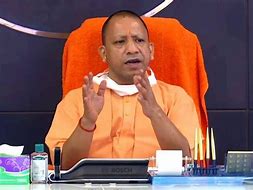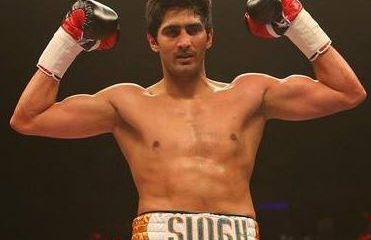Feature
Doctors at Fortis hospital save 24-week foetus from swine flu

New Delhi: Doctors at Fortis Escorts Heart Institute (FEHI) managed to protect a 24-week foetus from swine flu by treating the would-be mother tested positive for H1N1 virus.
Swapnil Mishra, 30, from Noida was admitted to the hospital with fever, persistent cough and shortness of breath. When her condition worsened and blood oxygen level went extremely low, she was put on ventilator.
As Mishra’s condition continued to deteriorate, Fortis doctors opted for ECMO (extracorporeal membrane oxygenation) machine, which acts as a heart-lung bypass. It can support and perform functions of lung and heart, separately as well as together.
With the use of ECMO her blood oxygen level started showing improvement. Since she had tested positive for H1N1 virus, we had to treat her with anti-virals like oseltamivir, said Vineeta Goyal, Senior Consultant at FEHI, in a statement on Monday.
Meanwhile, a gynaecologist too monitored her situation and the health of foetus through repeated ultrasounds. After 15 days, patient was weaned off ECMO and her foetus was alive and thriving, Goyal said.
Fortis doctors save swine flu patient, her foetus by treating H1N1 virus:
The ECMO circuit acts as an artificial heart and lung for the patient during ECMO therapy and can be used for patients of all ages.
However, ECMO also involved complications like bleeding, intrauterine foetal death and spontaneous abortion. All this was explained to the family, doctors said.
“This is the first reported case in India of a pregnant swine flu patient where both the mother and the foetus survived. It was a challenging case, fraught with complications and risks,” said Kousar Ali Shah, Zonal Director, at the hospital.
Incidente of swine flu is increasing at an alarming rate in the country. According to the Directorate General of Health Services, so far 1,196 people have been diagnosed with the disease.
H1N1, a self-limiting viral, airborne disease spread from person-to-person through large droplets generated by coughing and sneezing, indirect contact by touching a contaminated object or surface like phone, computer, door handle, door bell, pens, toys, and close contact (including handshaking, hugging and kissing).
Entertainment
Meghalaya Reserves Legalized Gambling and Sports Betting for Tourists

The State Scores Extra High on Gaming-Friendly Industry Index
Meghalaya scored 92.85 out of 100 possible points in a Gaming Industry Index and proved to be India’s most gaming-friendly state following its recent profound legislation changes over the field allowing land-based and online gaming, including games of chance, under a licensing regime.
The index by the UK India Business Council (UKIBC) uses a scale of 0 to 100 to measure the level of legalisation on gambling and betting achieved by a state based on the scores over a set of seven different games – lottery, horse racing, betting on sports, poker, rummy, casino and fantasy sports
Starting from February last year, Meghalaya became the third state in India’s northeast to legalise gambling and betting after Sikkim and Nagaland. After consultations with the UKIBC, the state proceeded with the adoption of the Meghalaya Regulation of Gaming Act, 2021 and the nullification of the Meghalaya Prevention of Gambling Act, 1970. Subsequently in December, the Meghalaya Regulation of Gaming Rules, 2021 were notified and came into force.
All for the Tourists
The move to legalise and license various forms of offline and online betting and gambling in Meghalaya is aimed at boosting tourism and creating jobs, and altogether raising taxation revenues for the northeastern state. At the same time, the opportunities to bet and gamble legally will be reserved only for tourists and visitors.
“We came out with a Gaming Act and subsequently framed the Regulation of Gaming Rules, 2021. The government will accordingly issue licenses to operate games of skill and chance, both online and offline,” said James P. K. Sangma, Meghalaya State Law and Taxation Minister speaking in the capital city of Shillong. “But the legalized gambling and gaming will only be for tourists and not residents of Meghalaya,” he continued.
To be allowed to play, tourists and people visiting the state for work or business purposes will have to prove their non-resident status by presenting appropriate documents, in a process similar to a bank KYC (Know Your Customer) procedure.
Meghalaya Reaches Out to a Vast Market
With 140 millions of people in India estimated to bet regularly on sports, and a total of 370 million desi bettors around prominent sporting events, as per data from one of the latest reports by Esse N Videri, Meghalaya is set to reach out and take a piece of a vast market.
Estimates on the financial value of India’s sports betting market, combined across all types of offline channels and online sports and cricket predictions and betting platforms, speak about amounts between $130 and $150 billion (roughly between ₹9.7 and ₹11.5 lakh crore).
Andhra Pradesh, Telangana and Delhi are shown to deliver the highest number of bettors and Meghalaya can count on substantial tourists flow from their betting circles. The sports betting communities of Karnataka, Maharashtra, Uttar Pradesh and Haryana are also not to be underestimated.
Among the sports, cricket is most popular, registering 68 percent of the total bet count analyzed by Esse N Videri. Football takes second position with 11 percent of the bets, followed by betting on FIFA at 7 percent and on eCricket at 5 percent. The last position in the Top 5 of popular sports for betting in India is taken by tennis with 3 percent of the bet count.
Local Citizens will Still have Their Teer Betting
Meghalaya residents will still be permitted to participate in teer betting over arrow-shooting results. Teer is a traditional method of gambling, somewhat similar to a lottery draw, and held under the rules of the Meghalaya Regulation of the Game of Arrow Shooting and the Sale of Teer Tickets Act, 2018.
Teer includes bettors wagering on the number of arrows that reach the target which is placed about 50 meters away from a team of 20 archers positioned in a semicircle.
The archers shoot volleys of arrows at the target for ten minutes, and players place their bets choosing a number between 0 and 99 trying to guess the last two digits of the number of arrows that successfully pierce the target.
If, for example, the number of hits is 256, anyone who has bet on 56 wins an amount eight times bigger than their wager.























